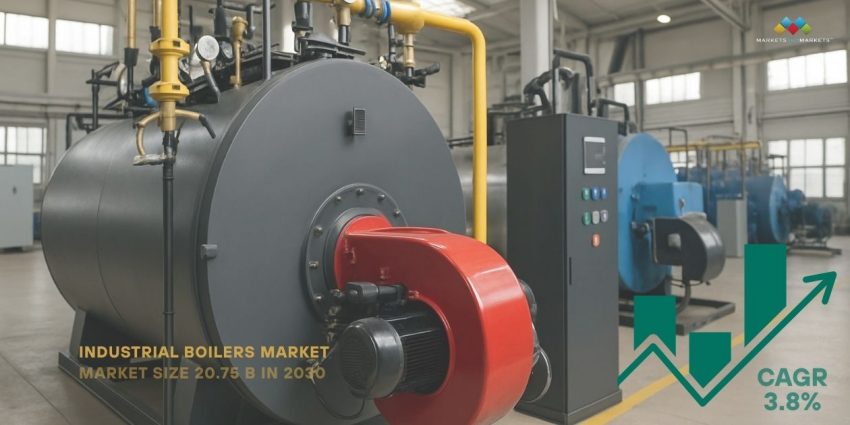The industrial boilers sector is in the middle of a pivotal transformation—one that blends traditional steam power with cutting-edge intelligence. As someone who has followed this space closely for years, I’ve seen the shift from basic thermal systems to smart, sustainable solutions. And if the numbers are any indication, we’re headed for an era of steady, strategic growth.
Industrial boiler market is projected to reach USD 20.75 billion by 2030 from USD 17.22 billion in 2025, at a CAGR of 3.8% during the forecast period.. While these figures are promising, what’s even more compelling is why this growth is happening—and how companies can harness it.
Why the Momentum Now?
The answer lies in three converging forces:
- Global industrialization, especially in Asia-Pacific, continues to fuel demand across sectors like chemicals, food processing, and paper & pulp.
- Regulatory shifts—particularly in Europe and North America—are prompting a push for low-emission, energy-efficient systems.
- Smart boiler technology is evolving fast, offering remote diagnostics, predictive maintenance, and energy optimization through IoT integration.
Gone are the days when a boiler was just a “heat-and-steam” machine. Today, boilers are expected to be connected, clean, and customizable.
APAC Leads, Europe Follows with Regulation
Let’s talk regional breakdown.
Asia-Pacific holds the largest share, driven by industrial expansions in India, China, and Southeast Asia. This region is not just scaling production but also upgrading to more efficient systems to meet energy mandates and cost-saving goals.
In Europe, we’re seeing mature markets like Germany, France, and the UK retool their existing infrastructure. The EU’s strict emission regulations have turned the spotlight onto hybrid and condensing boilers, making compliance a key business driver.
North America, on the other hand, is focusing heavily on modernization—replacing aging, inefficient units with smarter, leaner systems that can seamlessly integrate with plant automation.
Leading Players Are Doubling Down on Innovation
Some notable names making headlines:
- Thermax Limited recently posted a strong 20.5% rise in Q4 profit, a direct result of its robust industrial portfolio and solid overseas traction. India’s industrial backbone clearly sees Thermax as a key enabler of energy innovation.
- Babcock & Wilcox remains a foundational name in steam generation, but it’s their new suite of decarbonization tools and modular boilers that’s catching investor attention.
- Siemens AG and Mitsubishi Heavy Industries are leveraging their engineering pedigree to lead in the automation and sustainability segments, offering fully integrated solutions that meet both process and regulatory demands.
The Smart Boiler Era Is Here
One of the more exciting developments is the widespread adoption of smart boiler systems. These are no longer future concepts—they’re live, field-tested, and driving ROI across various plants.
Features like:
- Remote system diagnostics
- Predictive maintenance via AI
- Energy consumption analytics
- Real-time emission monitoring
are not just buzzwords—they’re now critical features industry leaders are actively integrating. And for good reason: they reduce downtime, improve efficiency, and align with corporate sustainability goals.
What Should Industry Experts Be Watching?
If you’re in a decision-making role in the industrial boiler space, here’s what you should keep on your radar:
- Invest in modular systems: Flexibility in plant operations is no longer optional.
- Track regional policy changes: Emission standards will continue to evolve, especially across Asia and the Middle East.
- Push for smarter control systems: The more connected your system is, the more resilient and cost-effective it becomes.
- Collaborate with innovative OEMs: Long-term partnerships with forward-thinking manufacturers will pay off in performance and compliance.
Explore the full report – Download the sample report.
The industrial boilers market is no longer just about steam—it’s about strategic energy solutions. Those who understand the shifting dynamics, adopt smart technologies early, and align with sustainable practices will lead this industry into the next decade.

